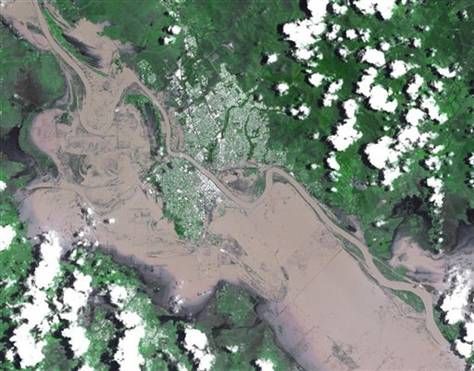
Rabobank Australia downgraded its production forecast for Australian cotton, sugar and sorghum crops in 2011, and said there are further downside risks, potentially reducing availability for exports.
Premier Anna Bligh declared the entire northeast state of Queensland a disaster zone after massive rains and flash floods to the west of Brisbane city killed nine people Monday. Bligh said the death toll could double, with scores still missing.
Heavy rain and local thunderstorms are expected to continue tonight through southern areas of Queensland state, which will lead to more localized flash floods and worsen existing river flooding, the Bureau said late Tuesday.
Weeks of rains have already taken a heavy economic toll on Queensland and its booming coal mining industry, with government leaders forecasting roughly A$10 billion (US$9.88 billion) in clean-up costs and lost revenue. The state's farm sector has also suffered, particularly cotton, other summer crops and sugar.
Earlier in the day, Bligh spoke of enormous disruption in southern Queensland, including in Brisbane city, where evacuations are already underway in riverside suburbs and in the west end of the central business district near the swollen Brisbane river, which is expected to rise to flood levels later in the week. Hundreds of people have been evacuated from flooded towns in Brisbane's hinterlands.
Northern areas in New South Wales are also seeing heavy rains and flash flooding, while severe weather warnings are active for central and western areas of southern Victoria state. Widespread flooding of biblical proportions in Queensland has destroyed summer crops across a number of regions since Christmas, Rabobank Australia said Tuesday.
A strong La Nina weather pattern in the Pacific Basin has been responsible for the heavy rainfall in spring and summer in New South Wales and Queensland, resulting in significant delays and downgrades to production of summer and winter crops.With the weather pattern expected to continue, northern Australia will likely experience above-average rainfall for at least another week or two, potentially compounding already severe flooding in Queensland, the Bureau said.



Reader Comments
to our Newsletter